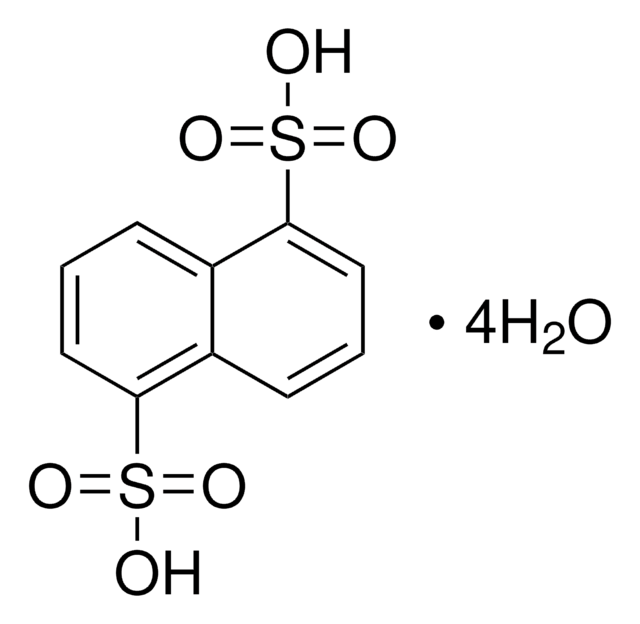P6273
2-Propylpentanoic acid
Synonyme(s) :
Valproic acid
Sélectionner une taille de conditionnement
Sélectionner une taille de conditionnement
About This Item
Produits recommandés
Indice de réfraction
n20/D 1.425 (lit.)
pb
220 °C (lit.)
Solubilité
H2O: slightly soluble
alcohol: soluble
Densité
0.9 g/mL at 25 °C (lit.)
Type de lipide
saturated FAs
Chaîne SMILES
CCCC(C(O)=O)CCC
InChI
1S/C8H16O2/c1-3-5-7(6-4-2)8(9)10/h7H,3-6H2,1-2H3,(H,9,10)
Clé InChI
NIJJYAXOARWZEE-UHFFFAOYSA-N
Informations sur le gène
human ... ALDH5A1(7915) , CYP1A2(1544)
mouse ... Hdac1(433759)
rat ... Slc6a1(79212)
Vous recherchez des produits similaires ? Visite Guide de comparaison des produits
Application
Actions biochimiques/physiologiques
Mention d'avertissement
Danger
Mentions de danger
Conseils de prudence
Classification des risques
Acute Tox. 4 Oral - Eye Dam. 1 - Repr. 1A - Skin Irrit. 2
Code de la classe de stockage
6.1C - Combustible acute toxic Cat.3 / toxic compounds or compounds which causing chronic effects
Classe de danger pour l'eau (WGK)
WGK 3
Point d'éclair (°F)
231.8 °F - closed cup
Point d'éclair (°C)
111 °C - closed cup
Équipement de protection individuelle
Eyeshields, Faceshields, Gloves, type ABEK (EN14387) respirator filter
Faites votre choix parmi les versions les plus récentes :
Déjà en possession de ce produit ?
Retrouvez la documentation relative aux produits que vous avez récemment achetés dans la Bibliothèque de documents.
Les clients ont également consulté
Active Filters
Notre équipe de scientifiques dispose d'une expérience dans tous les secteurs de la recherche, notamment en sciences de la vie, science des matériaux, synthèse chimique, chromatographie, analyse et dans de nombreux autres domaines..
Contacter notre Service technique

















